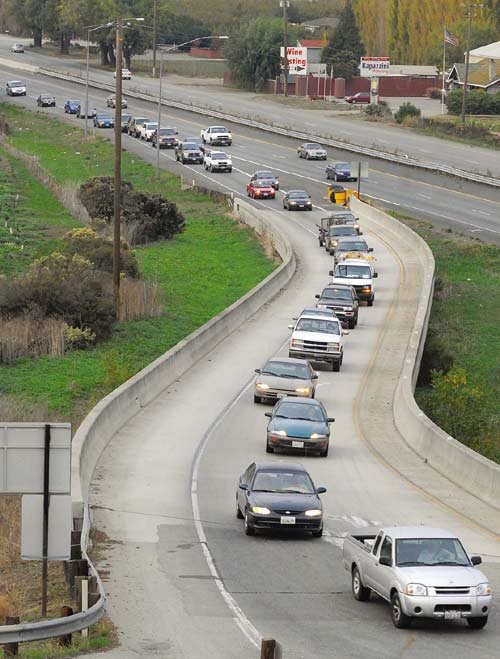
The traffic bottleneck that drivers encounter south of Gilroy on U.S. 101 could be a thing of the past if a proposed Santa Clara Valley Transportation Authority (VTA) development gets off the ground.
“This has been an ongoing conversation for about 20 years,” said Gilroy’s Mayor Don Gage.
The fact that an Environmental Impact Report (EIR) had been done, noted Gage, could mean that grant money for the project is getting closer.
“In five years the EIR could be obsolete,” he reasoned.
Brandi Childress, speaking for the VTA, agreed with most of Gage’s summation. However, she was quick to point out that no money has been earmarked for the project as yet.
“We want this project to be ‘shelf-ready’ if or when future funding becomes available,” she explained.
The imagined six-lane development would widen a 7.6-mile stretch of U.S 101 from Monterey Street in Gilroy to State Route (SR) 129 in San Benito County. Included in the work would be a reconstruction of the oft-clogged U.S. 101/SR25 interchange and the widening of the U.S. 101/SR 129 southbound off ramp.
“It’s a positive thing, we need to provide infrastructure down here,” said VTA Board Member Perry Woodward.
Gage points to the increase in commuter traffic from Santa Cruz and Watsonville that streams up U.S. 101 past Gilroy towards Silicon Valley as a driving force behind the project. However, Gage is adamant about who is going to foot the bill.
“The money has to come from grants, there’s not enough people,” he said, referring to any taxes on the sparsely populated area that the highway development would directly impact.
In the timeline of the “life of a highway project” there are three main phases – planning, project development and design – clarified Childress. The proposal is firmly in the “project development” phase, said Childress.
The environmental review process is undertaken via the California Environmental Quality Act (CEQA), she noted.
In the event that all of the stars align and money cascades into the VTA’s coffers, Gage foresees smart construction work leading to only minor traffic snafus.
“They just closed the lanes in the non-commute hours,” he said, referring to the last work he saw undertaken on U.S. 101.
“They could also do it at night,” he added.
A public meeting about the project will take place from 5 to 7 p.m. Thursday, March 28 at the Gilroy Public Library located at 350 W. Sixth St. in Gilroy. The presentation and public comment period will take place from 6 to 7 p.m.
Comments from the public are invited from March 14 though April 29, and can be directed to the VTA via email at 10**********@*ta.org or mailed to:
VTA Environmental Programs/Resources Management Department
Attn: Ann Calnan
3331 North First St., Bldg. B-2
San Jose, CA 95134-1927














